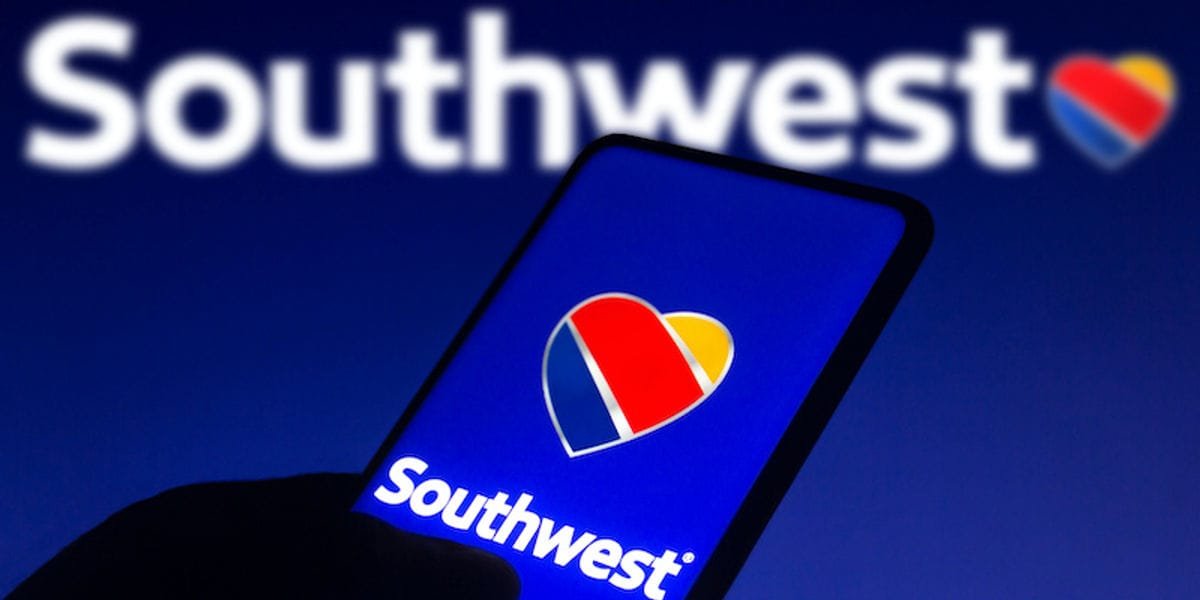The demands on an airline’s technology budget are wide and varied.
It’s an oversimplification, but fundamentally there’s the commercial side of the business and the operational side of the business. There are internal systems such as human resources and finance and then the external systems, some customer facing, some not. And there are ongoing maintenance and modernization requirements.
In short, deciding how much and where to invest is no mean feat and involves many, often moving, parts.
Southwest Airlines recently earmarked $1.7 billion to invest in technology in 2024 – including upgrades and maintenance – with chief executive Bob Jordan indicating cloud migration as one of the areas of focus during the carrier’s full-year 2023 earnings call in January.
Tasked with oversight and strategy for that investment is Lauren Woods, who was promoted to senior vice president of technology and chief information officer of Southwest just over a year ago.
“It’s an iterative process, it’s not a one ask,” she explained regarding whether the technology team crunches the numbers and sets the budget or if the finance team tells them what funds are available.
Allocating budget
“There’s a little bit of a layer cake to it. There’s a combination around commitments we’ve made around contracts and products we own and … [the] cost structures and licenses based on how large we are and how many airplanes we fly. So there’s a core to the cost structure of what we have that’s out there,” Woods said.
Subscribe to our newsletter below
Flying the airline is the foundational part of that “iterative process” and then there’s investment in new capabilities. This is where the discussion diverges into different parts of the business – revenue, customer service, operations, employee needs and more.
“So we work through all those needs and wants, and as you can imagine there’s always more asks than there is capacity for technology to do the work. We look and we work together to put an objective, you can call it a business case, against all these asks.”
Areas for investment are discussed in terms of longer term risks and benefits for the company as well as how to get more out of existing technology platforms.
While Southwest hasn’t broken down exactly what areas the investment will be devoted to, Woods said relatively equal amounts would go to the customer and commercial side of the business and the operational side of the business.
“There’s different things that make the percentage point between the two change over time, but for the most part, we really look at the benefit,” she said.
“And it’s not because we want to get it equal. It’s because when you look at the benefits for the company, it’s beneficial to us as Southwest Airlines to invest in our revenue, to invest in our customer service and invest in our operations at such a level because those are the things we value. Those are the things we feel are important, moving forward.”
She highlighted projects to make aircraft turnaround more efficient as well as bringing in more self-service capabilities for passengers around boarding and re-accommodation when there’s disruption as two areas making an impact to the airline and passengers.
“It’s digitizing things that you used to have to call the call center for or wait in line at the airport and [instead to] really allow for the customer who walks into the airport with the mobile device in their hand [to do things for themself].”
Disruption has probably been front of mind for many Southwest executives in 2023 following volumes of cancellations in late 2022 during a multi-day winter storm and costing the airline more than a billion dollars.
In February, aviation data provider Infare has said disruptions are 300% above historical norms, while a report from Amadeus on managing disruption found 64% of carriers are investing in new technology to improve their response to disruption.
Woods shared that while Southwest has been working to modernize its systems since the pandemic, the process accelerated when the weather disruptions happened.
What’s tough is that we do not walk around with 10 year old cellphones in our pockets, right? So technology is a never ending need for upgrades or maintenance.
Lauren Woods
“We have a multi-year journey to modernize operations and that continues going forward. The hard part about any technology investment is it kind of never ends,” she said.
“We continue to want to grow and evolve as an airline and technology is one of the crucial ways of creating that competitive advantage. So even though we accelerated some of the plans we already had, we have plans after those plans, after those plans, to continue to go forward. Some of those are creating new capabilities we don’t have today. Some are continuing to maintain what we created and make small enhancements. And of course, we always have to maintain the technical health of our systems.”
The health of some airline systems, especially around distribution, has been a hot topic in the industry for many years. And even in the wider travel industry, the issue of technical debt is being discussed with more urgency.
Health check
When it comes to how big the issue is for Southwest and the wider industry, Woods said that any company that has been around for 20 years or more will probably “struggle with technical debt in some way, shape or form.”
“That being said, I believe we have, again through that acceleration in some places, made good strides on some things that previously would have been highlighted as technical debt in big ways,” she said.
“What’s tough is that we do not walk around with 10-year-old cellphones in our pockets, right? So technology is a never ending need for upgrades or maintenance.”
She added that this is where the airline goes back to looking at objectives and balancing the needs of various partners in the business while also ensuring technical debt is not being created further down the line.
“It’s just like you’ve got to work out everyday, you have to exercise on a regular basis that technology maintenance. And because we continue to evolve as a airline, that conversation is getting easier for me as a leader of technology with my business partners,” she said.
“We need to make sure that part of our every day, month, year investment program is to maintain that technical debt. It doesn’t go away …
Within six months to a year to eighteen months, you’re going to feel it again.”
Investment in more modern technology – Southwest has a partnership with Amazon Web Services – and has moved about 50% of its technology to the cloud, along emerging technology such as generative artificial intelligence, will also help address technical debt.
“I’m a big believer in cloud and cloud native technologies as a way also to maintain and combat technical debt because AWS helps us with that. They maintain these services, they have a very disciplined and quick upkeep of their services, and are constantly improving, which holds us accountable to constantly update and improve our services.”
Already, she said, Southwest has been able to optimize flight operations and improve analytics platforms and data structures as a result of the partnership.
“All of that allows us to produce better technology solutions, better being more reliable, more secure, more effective in order to create that competitive advantage,” Woods said.
AI foundation
As for the buzz around generative AI, Woods described it as “fun to watch” when the hype kicked off in late 2022.
“Everybody gets super excited about it. It was funny as well because you got everybody talking about ‘Hey, can you go get me some some of that GPT?’”
And she said investments made during COVID on the airline’s data platform are now paying off by putting the airline in a better position to capitalize on emerging tools.
“We really started to explore cloud data warehouse, data lake, real time data streaming, event driven architecture and other things,” she said.
“Our thought process was that this is foundational given how important data is as a competitive advantage for us going forward. Because we made those investments, we’ve been able to pivot and really leverage data science capabilities on top of that new data platform.”
Woods added that with that as the foundation, the airline is now looking at ways to learn about and leverage generative AI.
“It’s really to think through different possibilities of how it can improve the productivity of our customer service agents, of our internal folks that work in the airlines. So, we’re really excited to see how we can leverage it going forward,” she said.
“It’s not going to replace all the employees in the airline but airlines who learn how to use generative AI and leverage high intensity data processing will be better airlines, in serving their customers, and handling pretty complex problems in flight operations.”
Despite the demands on Southwest’s technology budget from various quarters, and the enormity of the work to be done without distraction from shiny things, Woods summed up her biggest challenge as effective communication.
“With technology it’s very easy to get stuck in the way we speak and understand things,” she said.
“I don’t think that’s always effective from the business point of view and always translates into [the listener’s] point of view. One of the challenges I constantly have is making sure to change my communication to be most effective based on my audience.”













